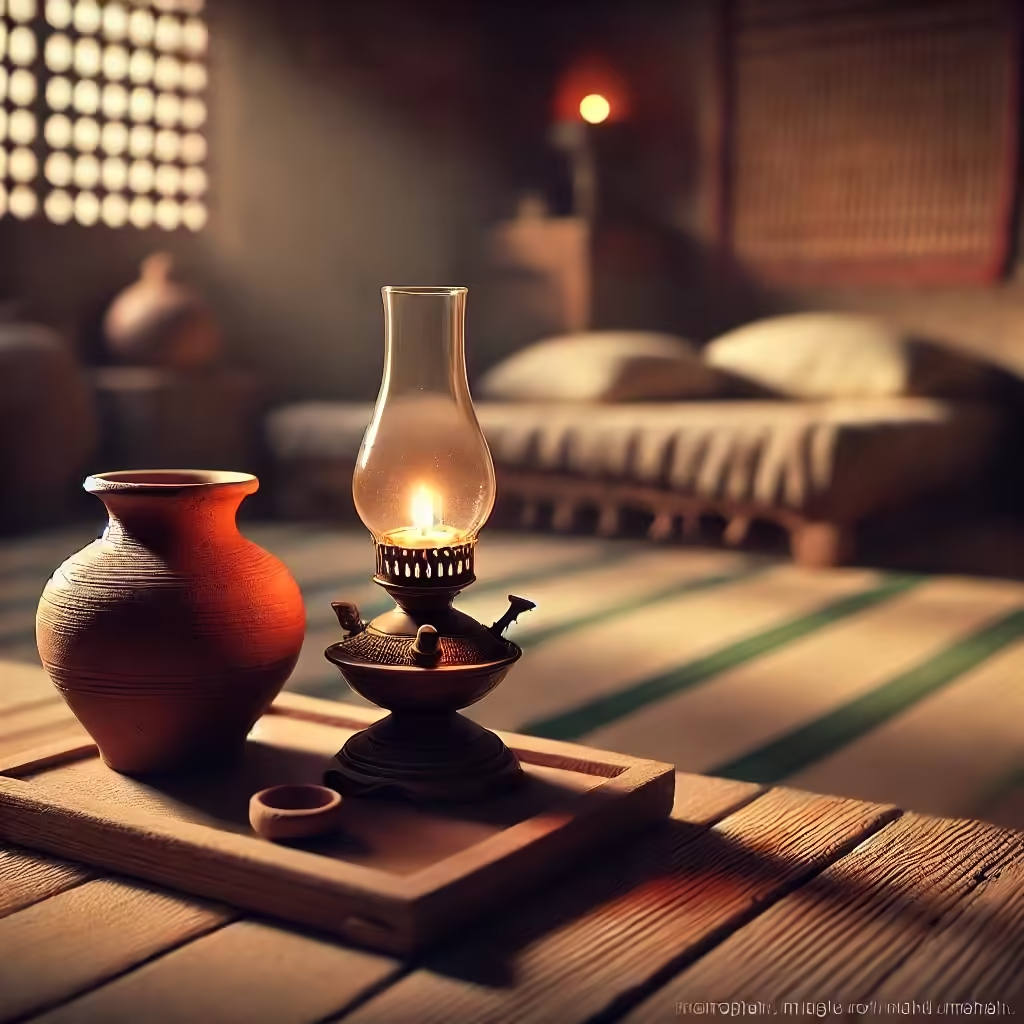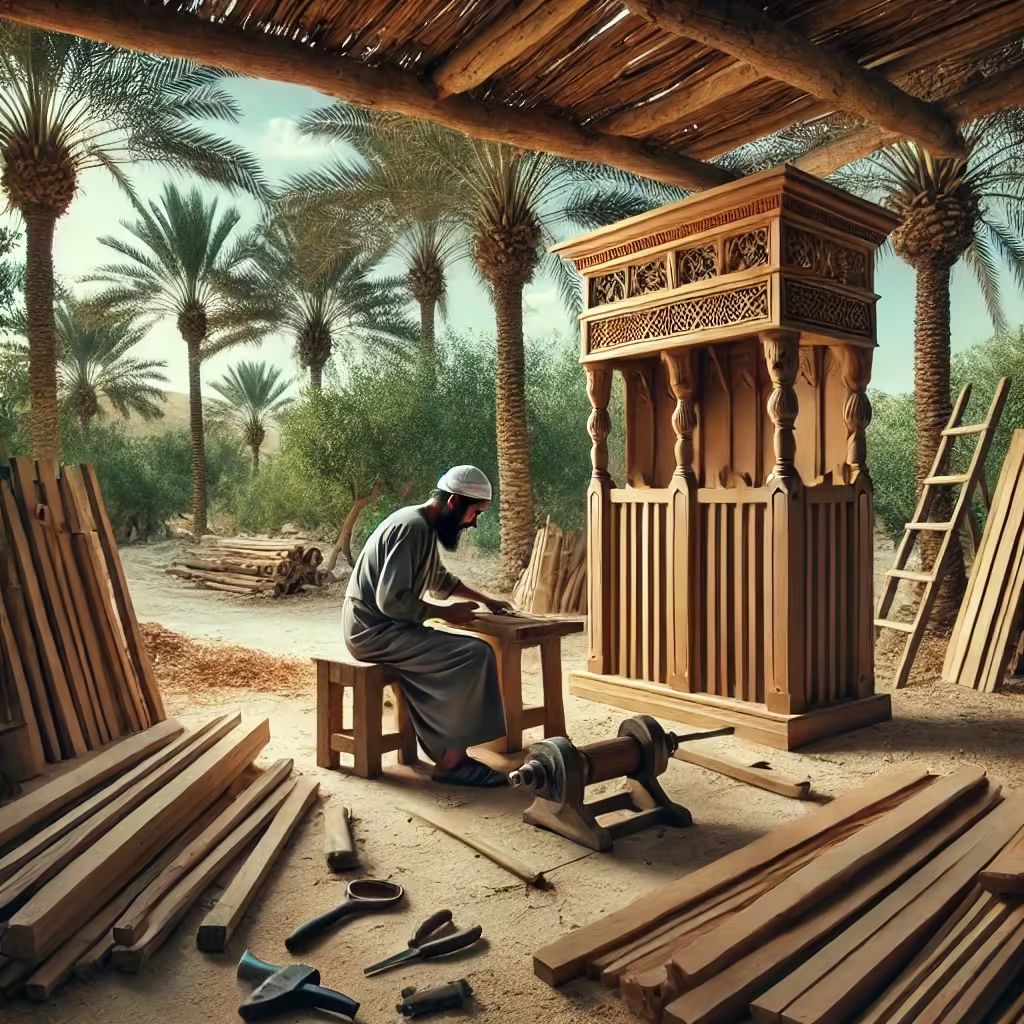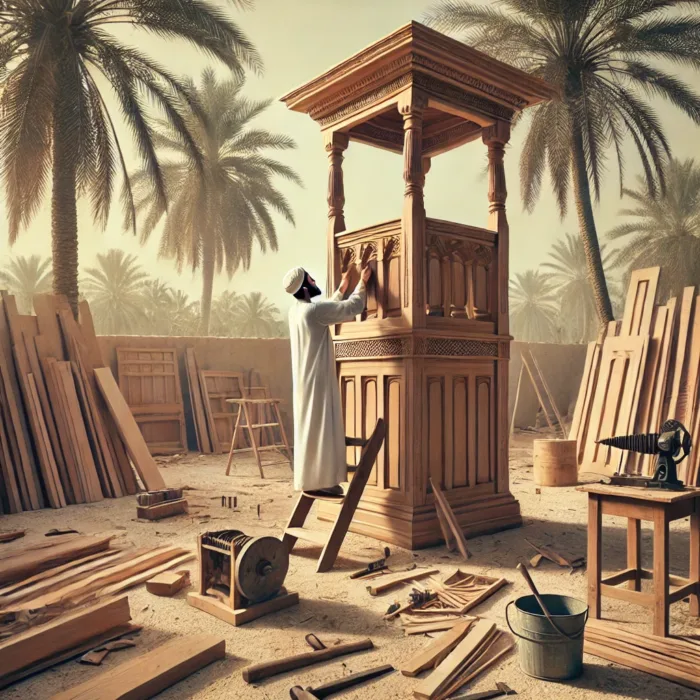Table of Contents
Introduction
This fifth part of the series “In the Brightened Corridors of the Prophet’s Life Story“, delves into the cultural innovations that took root in Madinah during the prophetic era. Few are aware that conveniences like indoor bathrooms and nighttime home lighting trace back to the time of Prophet Muhammad (Peace be upon Him). Click here to explore the entire series, ALLAH willing.
Unseen Cultural Innovations of Medinah During the Prophet’s (PbuH) Era
In this article, we highlight aspects that might often go unnoticed in the life story of Prophet Muhammad (Peace be upon Him). Today’s focus is on a remarkable subject that escapes many: the transformation of Medinah under the Prophet (Peace be upon Him) was not just a historical phase but a period of cultural innovation and urban development that reshaped the city.
Many of these prophetic contributions are subtly mentioned in hadith collections and biographical records, often woven into the narratives. For instance, few realize that the practice of building bathrooms near homes began in this era. Previously, people would go to al-Khalaa’—open, remote areas—for relief.
A Cultural Shift: The Introduction of Private Facilities in Medinah
How do we know this? We learn it from a well-known hadith in Bukhari about the incident of slander (‘ifk), narrated by Aisha (may ALLAH be pleased with Her). She described how, because of their simple diet, people would generally need to go out only once a day for this purpose. From Aisha’s words, it seems that this outing was not only a necessity but also served as a brief excursion.

Aisha went out with Umm Mistah, a relative of Abu Bakr (may ALLAH be pleased with them). After returning from the Banu Al-Mustaliq expedition, where she had been unwell and cared for at her parents’ home, she accompanied Umm Mistah to Al-Manasi’—an open area outside Medinah near Al-Baqi’. She explained, “It was our relieving ground, and we would only go at night. This was before we began building Al-Kunuf (private facilities) close to our homes“. She added, “We adhered to the old Arab custom of going to open plains before adopting nearby facilities, though at first, we felt uneasy having them close to our homes“1.
From this text, subtly embedded within the story of the ‘ifk incident, we understand that during the time of the Prophet (Peace be upon Him), people began building bathrooms close to their homes and even within them—a practice that has, of course, become widespread in our modern world.
Home Lighting: A Cultural Innovation During the Prophetic Era
Another cultural innovation introduced by the Prophet (Peace be upon Him) was home lighting. Hadiths mention that lamps began appearing in homes during His era. Ibn Mas’ud (may ALLAH be pleased with him) recounted that during the Tabuk expedition, when AbduLLAH Dhul-Bijadayn passed away, he “saw a flame of fire near the army. I followed it and found ALLAH’s Messenger (Peace be upon Him), Abu Bakr, and Umar, who had dug a grave for AbduLLAH Dhul-Bijadayn Al-Muzani, and the Prophet (Peace be upon Him) was inside the grave“.
In a narration from At-Tirmidhi, the Prophet (Peace be upon Him) entered a grave at night, and a lamp was lit for Him. As-Suyuti interpreted this as candlelight, indicating that candles were already in use in Medinah by that time. He even authored a treatise, Masaamirat-ul sumuu’ fii Dawʼi shumuu’ (Night Conversations About Candlelight), to highlight this cultural development.
In a well-known hadith from Bukhari, Aisha (may ALLAH be pleased with Her) described the Prophet’s (Peace be upon Him) night prayers:
“I used to sleep in front of the Messenger of ALLAH (Peace be upon Him) with my legs in his prayer direction. When he wanted to prostrate, he would prod me so that I withdraw my feet, and when he stood up, I would stretch them. In those days, houses had no lamps“2
Her mention of “In those days, houses had no lamps” underscores that lamps were not yet common. The Andalusian scholar Imam Ibn Battal noted, “This indicates that lamps were introduced later“.

Additionally, Ibn Sa’d in his At-Tabaqat reported that Prophet Muhammad (Peace be upon Him) would avoid sitting in a dark room without a lamp, suggesting that lamps became customary in His time. This introduction of home lighting was a significant urban and cultural innovation that became part of Medinah’s life during the prophetic period.
Illuminating the Prophet’s Mosque: The Story of Medinah’s First Lamps
When was the Prophet’s Mosque first lit? This cultural innovation occurred during the prophetic era, as noted by Imam Ibn Abd al-Barr in Al-Isti’ab and Ibn Hajar in Al-Isabah, in accounts related to Tamim Ad-Dari (may ALLAH be pleased with him). Tamim Ad-Dari had a servant who recounted lighting oil lamps for the Prophet (Peace be upon Him), a novel practice at the time, as they previously relied on palm fronds for illumination. When Tamim arrived, he introduced lamps—wicks placed in oil and then lit in the mosque.
Seeing the mosque aglow at night, the Prophet (Peace be upon Him) asked, “Who has lit our mosque?” Tamim Ad-Dari replied, “O Messenger of ALLAH, it was this servant of mine“. The Prophet (Peace be upon Him) then asked, “What is his name?” Tamim answered, “His name is Fatah“. The Prophet (Peace be upon Him) responded, “Rather, his name is Siraj (lamp)“. This became his name in biographical texts and Companion accounts, such as Al-Isti’ab and Al-Isabah, to distinguish him among the Companions.
A detailed account of this story exists in a narration with a weak chain, but this does not undermine the historical essence. It mentions that Tamim Ad-Dari, upon returning from Syria, brought lamps, oil, and ropes to Medinah. Arriving on a Friday, he instructed his servant to set up the lamps, fill them with oil, and light them, marking the introduction of lamps in Medinah. This addition was an architectural enhancement that enriched the city’s environment.
The Introduction of the Minbar: A New Medium in Medinah
Among other architectural additions and cultural innovations introduced to Medinah during the time of Prophet Muhammad (Peace be upon Him) was the adoption of the minbar (Islamic pulpit). The minbar served a role comparable to what we might now consider a “media platform” or “broadcast channel”, as previously, the Prophet (Peace be upon Him) would simply lean against a palm trunk to deliver His sermons.

An Ansari woman (may ALLAH be pleased with her) suggested, “O Messenger of ALLAH, shall I have something made for you to deliver speeches from? I have a carpenter servant“. This narration from Bukhari, shared by Jabir (may ALLAH be pleased with him), records the Prophet’s (Peace be upon Him) response: “If you wish“.
The woman directed her carpenter to make the minbar, and various narrations identify this craftsman differently. Some accounts say he was this Ansari woman’s servant, others suggest he was a freed slave of Al-‘As bin Umayya, while some say he was a servant of Abbas bin Abdul Muttalib. Imam Ibn Rushd, author of Muqaddimat, suggested, “Perhaps they all collaborated in making it“. If this deduction is accurate, it means a team worked together to craft the minbar, introducing a new form of communication and cultural expression to the people of Medinah.
Conclusion
The conclusion we wish to emphasize is that many cultural innovations and architectural developments enriched Medinah during the prophetic era. Thus, the life of the Prophet (Peace be upon Him) there was not just a historical phase but a period of renaissance and civil advancement for the Prophetic city.
We ask ALLAH, the Blessed and Exalted, to teach us what benefits us, to grant us benefit from what HE has taught us, and to increase us in knowledge.
Sources:
- Mohamed Elhamy. محمد إلهامي | في أروقة السيرة | 5. المدينة المنورة في حلة جديدة. YouTube Video.

